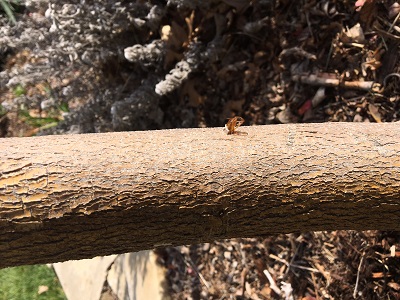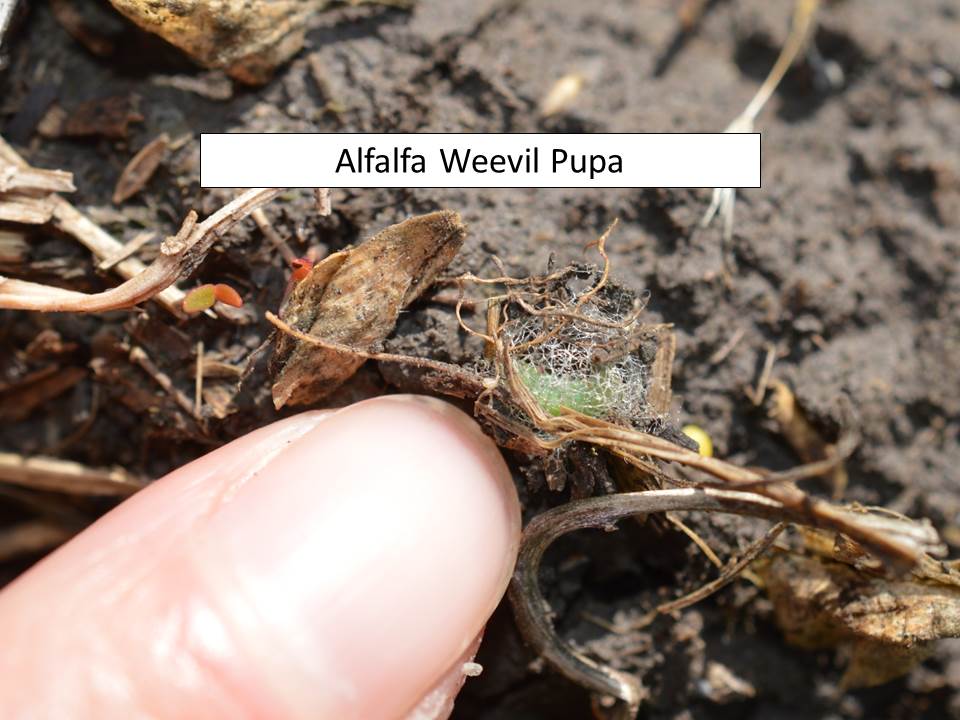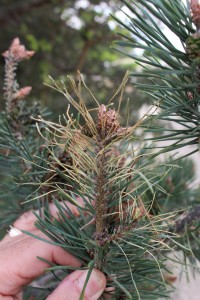–by Dr. Raymond Cloyd
We are receiving inquiries regarding the ash/lilac borer (Podosesia syringae). It is important to note that this is not the same insect pest as the Emerald ash borer (Agrilius planipennis). The Emerald ash borer is a wood-boring beetle whereas the ash/lilac is a wood-boring caterpillar. Ash/lilac borer adults are typically active from mid-to-late-April through early-May. The adults are brown, clearwing moths that resemble paper wasps. Peak moth activity usually occurs from May through June although this depends on temperature. Adult females lay tan-colored, oval-shaped eggs in cracks and crevices, or wounds at the base of plant stems. A single mated female may live about one week and lay up to 400 eggs. Below are the major biological and management parameters associated with this insect pest:
* Larvae cause plant damage by creating tunnels and feeding within the bark (cambium). The larvae may also bore further into the wood and feed within the sapwood and heartwood.
* Larval feeding restricts the flow of water and nutrients causing shoot or branch dieback. Ash/lilac borer typically feeds near the base of plant stems creating swollen areas or cracks at the base of plants, and where major branches attach to the trunk.
* Evidence of larval feeding includes the presence of light-colored sawdust that accumulates at the base of infected trees or shrubs. Clear-wing borer larvae expel sawdust from cracks in the bark that accumulate at the base of infested trees and shrubs while beetle borers (particularly flat-headed borers) pack their galleries with sawdust-like frass.
* Ash/lilac borer overwinters as late-instar larvae located in feeding tunnels or galleries.
* One way to determine if trees or shrubs are or have been infested with ash/lilac borers is the presence of brown papery pupal cases that protrude from the bark (Figure 1 and Figure 2) These pupal cases are where adults emerge from.

Figure 1

Figure 2
* In Kansas, there is one generation per year.
* The primary means of alleviating problems with ash/lilac borer is to avoid “plant stress” by properly implementing cultural practices such as irrigation (watering), fertility, pruning, and mulching. Stressed plants are more susceptible to attack than so called “healthy plants.” A two to three foot wide mulched area around the base of trees and shrubs will prevent injury from lawn mowers and weed-trimmers. Furthermore, avoid pruning plants in late spring through early summer (under usual weather conditions), because this time period is when moths are typically present.
* Insecticides containing the active ingredients, permethrin or bifenthrin may be applied to the bark, at least up to six feet from the base, in order to prevent ash/lilac borer larvae from entering plants. Clear-wing borer larvae crawl on the bark in search of entry points, which exposes them to insecticide residues.
* Pheromone traps are commercially available for capturing adult males, which helps to determine when females will be laying eggs. The use of pheromone traps helps in timing applications of insecticides. Insecticide spray applications should begin seven to 10 days after capturing the first moths. Also, be sure to check traps two to three times per week and record the number of newly captured males.
* For more information regarding ash/lilac borer management contact your county or state extension specialist.
I want to acknowledge Jeff Otto of Wichita, KS. Jeff keeps me abreast of the “bug situation” in south-central Kansas. Also, the images associated with Figures 1 and 2 are courtesy of Jeff. If anyone wants to act as a “bug scout” and provide me with information on what “bug” activity is going on in Kansas throughout the year, just like Jeff, please contact me at 785-532-4750 or rcloyd@ksu.edu.















